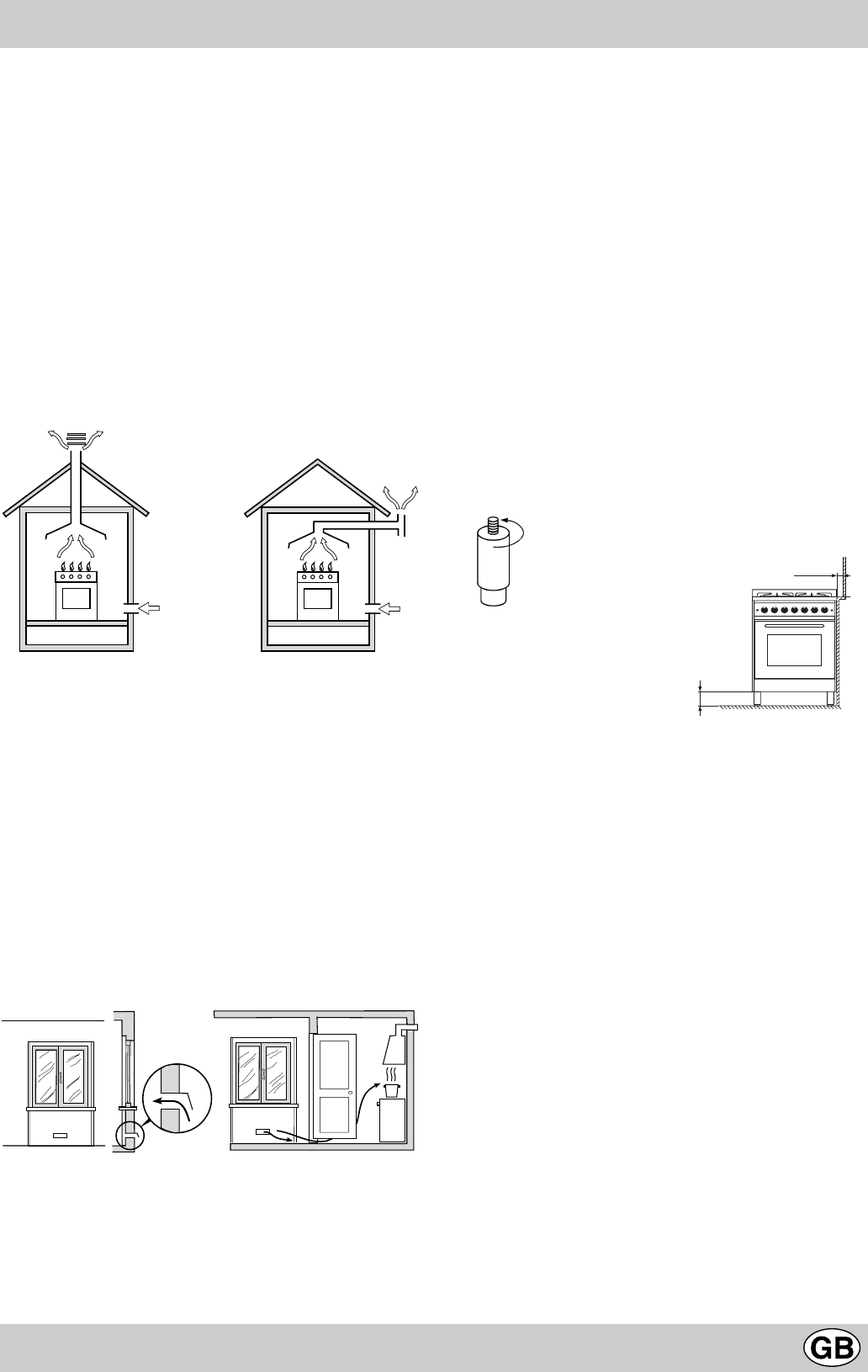
3
Instructions for installation
The following instructions should be read by a qualified
technician to ensure that the appliance is installed, regu-
lated and technically serviced correctly in compliance with
current regulations.
Important: remember to unplug the appliance from the
mains before regulating the appliance or carrying out
any maintenance work.
Positioning
Important: this appliance may be installed and used only
in permanently ventilated rooms in compliance with cur-
rent Norms in force. The following requirements must be
observed.
a) The room must be equipped with an exhaust system
that vents the combustion fumes to the outside. It may
consist of a hood or an electric fan that automatically
starts each time the appliance is turned on.
b)
The room must also have a system to permit proper air circula-
tion, needed for combustion to occur normally. The flow of air
needed for combustion must not be less than 3 m
3
/h per kW of
installed power. The air circulation system may take air directly
from the outside by means of a pipe with an inner cross section of
at least 100 cm
2
; the opening must not be able to be accidentally
blocked. For those appliances not equipped with a safety device
for accidental flame loss, the ventilation apertures must be in-
creased by 100%, with the minimum being 200cm
2
(Fig. A). The
system can also provide the air needed for combustion by indi-
rect means, i.e. from adjacent rooms fitted with air circulation
tubes as described above. However, these rooms must not be
common rooms or bedrooms.
A
c) Intensive and prolonged use of the appliance may re-
sult in the need for supplemental air circulation, e.g.
opening windows or increasing mechanical venting (if
present).
d) Liquid petroleum gas descends towards the floor as it
is heavier than air. Thus, rooms containing LPG cylin-
ders must also be equipped with apertures to the out-
side for ventilation of gas in the event of leaks. LPG
cylinders must not, therefore, be installed or stored in
rooms or storage areas that are below ground level (cel-
lars, etc.) whether they are partially or completely full.
It is a good idea to keep only the cylinder being used in
the room, positioned so that it is not subject to heat
produced by external sources (ovens, fireplaces, stoves,
etc. ) which could raise the temperature of the cylinder
to above 50°C.
Prior to installing the cooker, 95 ÷ 155 mm high support-
ing feet (provided) should be fitted into the holes to be
found in the bottom of the cooker (fig.F). These feet are
screw-adjustable and whenever necessary should be used
to make sure the cooker stands level.
Installation of the cooker
The appliance can be installed next to furniture units which
are no taller than the top of the cooker hob. The wall in
direct contact with the back panel of the cooker must be
made of non-flammable materials. During operation the
back panel of the cooker could reach a temperature of
50°C above room temperature. For proper installation of
the cooker, the following precautions must be taken:
For trouble-free operation of appliances installed in hous-
ing units, the minimum distances shown in fig.E should
be observed. Adjacent surfaces and the wall at the rear
should also be able to withstand an overheating tempera-
ture of 65°C
a) The appliance can be placed in a kitchen, dining room
or bedsit, but not in a bathroom.
b) Any hoods must be installed according to the require-
ments in the installation manual for the hoods them-
selves.
c) If the cooker is installed beneath a wall cabinet, the
latter must be situated at a minimum of 420 mm above
the hob. The minimum distance between the worktop
and kitchen units made of combustible material is 700
mm (Fig. C and D).
d) The wall in direct contact with the back panel of the
cooker must be made of non-flammable materials.
fig.F
fig.E
95÷155mm
min. 100mm
In a chimney stack or branched flue
(exclusively for cooking appliances)
Directly to the outside
Detail A Room
adjacent
Room to be
ventilated
Examples of ventilation holes
for comburant air
Fig. A
Enlarging the ventilation slot
between
window and floor
Fig. B


















